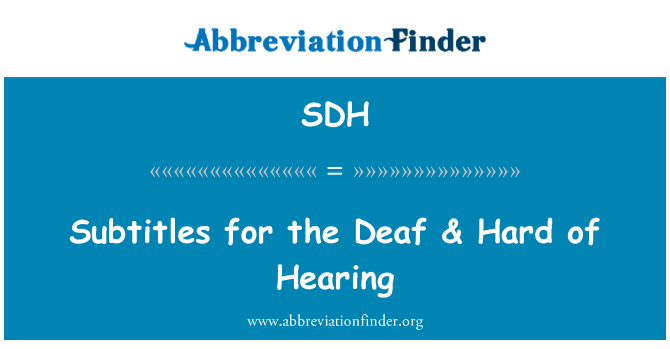

People with hearing problems could use the help of hearing aids. Presented by Schwartz (1996), here are the various communication approaches available for people who are deaf or hard-of-hearing: These two could help HoH audience follow dialogues and encode the film’s message.Ĭommunication Approaches to the Deaf and Hard-of-Hearing Audience Translation with explicit attribution and vehicular matching are both preferred strategies. Specialists recognized that hard of hearing audience prefer having more information about a foreign dialogue in multilingual films.

While working on the audiovisual product, the translator cannot stick to one single strategy, as films are dynamic in nature.

Translation with explicit attribution: translating the dialogue and indicating the foreign language spoken, e.g.Vehicular matching: when the transcribed version shown on the screen without any translation and identification e.g.
#Sdh subtitles professional
There are five key strategies for preparing efficient professional subtitling: The Five Strategies for Preparing Subtitle

In addition, in some cases two other translation types can be applied:ġ- Non-translation: when the dialogue is left as is.Ģ- Double translation: when the dialogue or message is translated twice, by combining two of the translation types.Ĭhoosing the appropriate translation type depends on the target audience if they speak different languages and the stylistic coloring in polyglot films. Presenting rather the original dialogue of the speaker, or a translated written text showed on the lower part of the screen, as well as other elements that may appear in the scene like: letters, inserts, graffiti, inscriptions, etc., and the information in the soundtrack (songs, voices off).ģ- Voice over: Voice over is “simultaneous emission of the original soundtrack and the translation track” (Franco, Matamala & Orero, 2010, p. Non-verbal-visual channels: pictures on the screen.ĭubbing is replacing the original speech of a film, in the source language, with a translated dialogue recorded in the target language.Verbal-visual channels: subtitles, signs, notes, and inscriptions that appear on the screen.Non-verbal audio channels: music, sound effects, off-screen sounds.Verbal audio channels: dialogues, songs, and off-screen voices.The main channels of information related to the AVT can be divided into: It makes a big challenge for professional translators, since they have to work with the verbal text, sound effects and visual platform in a specific atmosphere of the AV text. Thus, AVT is considered as verbal and non-verbal components translation. While visual codes include iconographic, photographic, graphic, planning, syntactic or montage, and mobility codes. Cinematic language consists of linguistic, paralinguistic, musical codes and sound effects. Cinematic language is a complex process, as it’s not only about linguistic aspects, but also encoding what forms the final message. “ AVT is innate to humankind in general people have been translating the audio/visual world which they live in from time immemorial”ĭiaz Cintas, a Professor at the Centre for Translation Studies (CenTraS), University College LondonĪVT is a multi-layered operation.


 0 kommentar(er)
0 kommentar(er)
